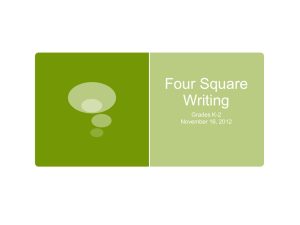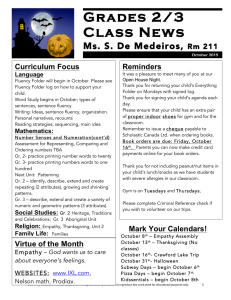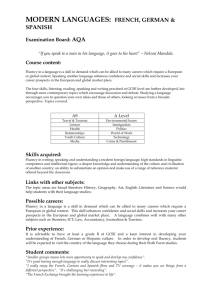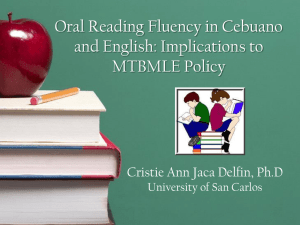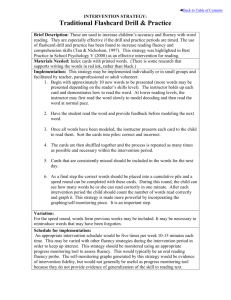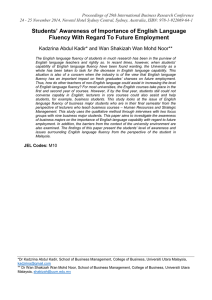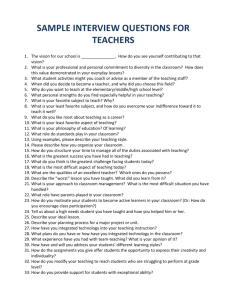Power Writing & Four Square PowerPoint
advertisement
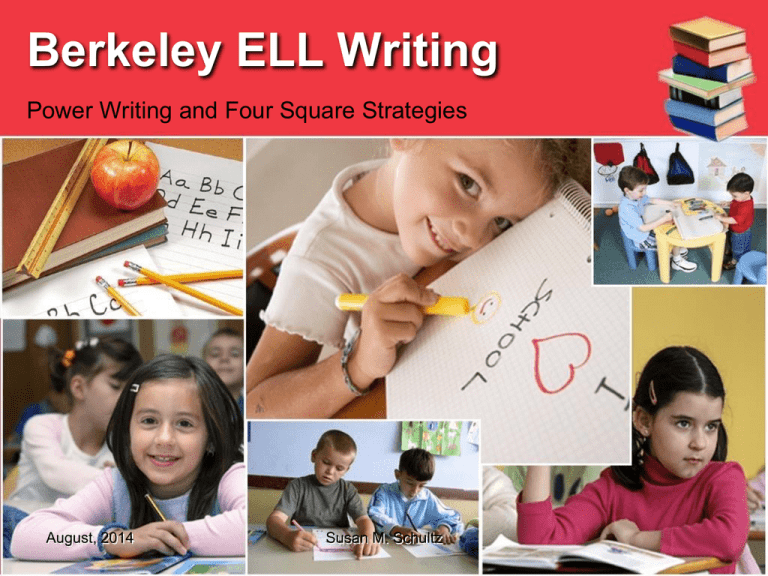
Berkeley ELL Writing Power Writing and Four Square Strategies August, 2014 Susan M. Schultz Writing and the Common Core Review the writing standards for your grade level…………………… With a partner discuss the challenges these standards present for your students. Writing Research • Only 24% of 8th and 12th graders perform at the proficient level in writing, and 3% at the advanced level. (NAEP 2011) • College instructors estimate that 50% of high school graduates are not prepared for collegelevel writing. (Achieve 2005) • Minnesota seniors submitted writing to college professors. Over 95% of writing was narrative and 97% not deemed college ready! National Commission On Writing Time: The amount of time students spend on writing should be at least doubled. Writing Across the Curriculum: Because of the near total neglect of writing outside of English departments teachers of history, science, art, P.E., social studies, etc. should encourage students to write more. Assignments: More out of school time devoted to writing. Students should write every day and teachers provide regular and timely feedback. Considerations for ELL Students • Create many opportunities for students to engage in rich, purposeful reading and discussion of the topic before writing. • Use mentor texts for examples of structure and content. • Gradual release of responsibility • Anchor charts with examples, sentence lead ins, key words. I. Four Square Writing Method Four Square The Four Square is an organizer that combines the best of the outline, web, semantic map and other writing approaches (e.g. hamburger). Teachers can use it for instructional purposes from writing with pictures to producing multi-sentence paragraphs. Four Square in Primary Grades 1. The teacher demonstrates with a topic and pictures that relate to the topic. Ask students to talk about how the pictures fit the topic. 2. The teacher selects a topic and allows students to draw pictures in each box that fit the given topic allowing many opportunities for students to talk about their drawings. 3. Students or teachers select a topic, draw, and begin to write words, sentences or invented writing about the topic Four Square Sophistication 1. Students write a concluding thought about their four squares. 2. Students write opening topic sentence, list details in each box, and write a phrase of topic for each box. 3. Students support thoughts with three details in each square and write a conclusion. 4. Students construct a five paragraph essay with a topic sentence/theme three paragraphs of support and a concluding paragraph. Four Square Facilitation Model at each stage Provide mentor texts already completed Post charts with transition words to begin paragraphs Choose subjects and topics that the students know well II. Power Writing for Fluency Why do students lack writing fluency? • They have too few opportunities to write • They fear that what they write may be judged • They lack a metacognitive awareness of how to begin What is writing fluency? Writing fluency is not simply getting lots of words down on paper as fast as one can, anymore than reading is merely decoding text quickly. Writing fluency means quickly creating a cohesive message. As students develop writing fluency, their word choice and phrasing should become more sophisticated – adding expression and depth to their writing. Power Writing Defined Power writing is a timed activity that requires students to write as many words as they can on a topic in a given amount of time. Power Writing Advantages • Stamina • Confidence • Students create a cohesive message, as word choice and phrasing become more sophisticated – adding expression and depth to writing. Where to begin? • Pre-selected topics • Informational text from the curriculum in language arts, social studies, or science • Topics of interest to all students in the group • Student suggestions for writing Power Writing Teacher Script “Write as much as you can, as well as you can about….” Power Writing Gradual Release Teacher modeling e.g. ‘write as much as you can as well as you can about your favorite part of the morning’ Student Practice Group practice with teacher assistance or collaborative groups/work stations. Individual Practice Students on their own. Let’s Practice! Write as much as you can, as well as you can, about a goal you have for your students or class this year. Reflection on writing • What do you notice? • What were you surprised by? • What would it take to get better? Collaborative Group Work Groups select topics from pre-selected envelopes. One person selects topics and is the timer; other students write and graph results. (Can be table work or work stations) Teacher works with those students needing more support. What………….So What? What implications might power writing have for your group? Formative Assessment Remember it is not about writing as many words as you can. It is about easily getting your meaningful ideas down in writing. Four Square and Power Writing With your neighbor share when you might or should use Power Writing or Four Square with your students. Four Square Uses • • • • • • • • Science vocabulary High frequency words Reading Street prompts Writing center Content review Research projects Author studies Whole group – add details Power Writing Uses • • • • • • • • • • Exit slip – check on content Journals Reading responses Center Confidence building/goal setting Progress Monitoring Grammar conventions Extended writing pieces Interdisciplinary Peer conversations



